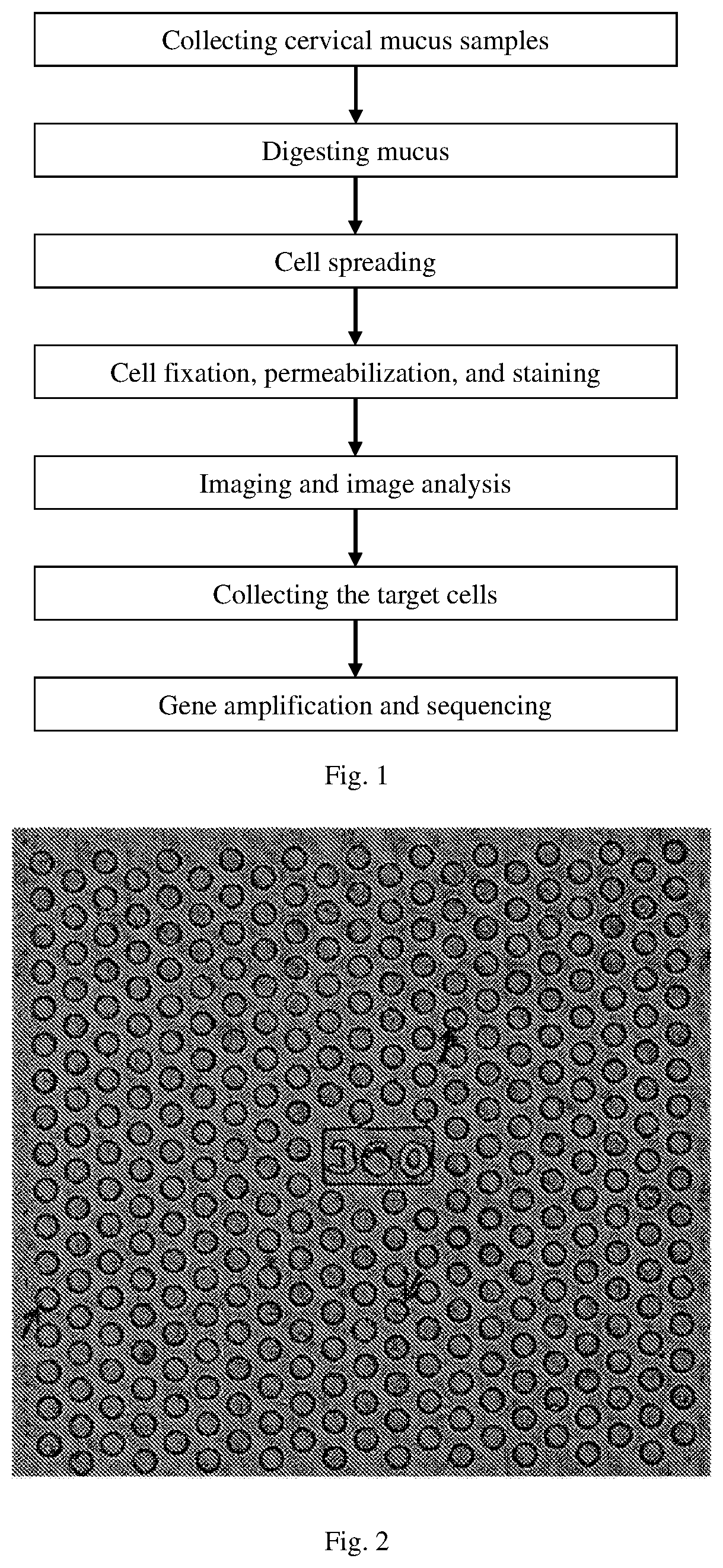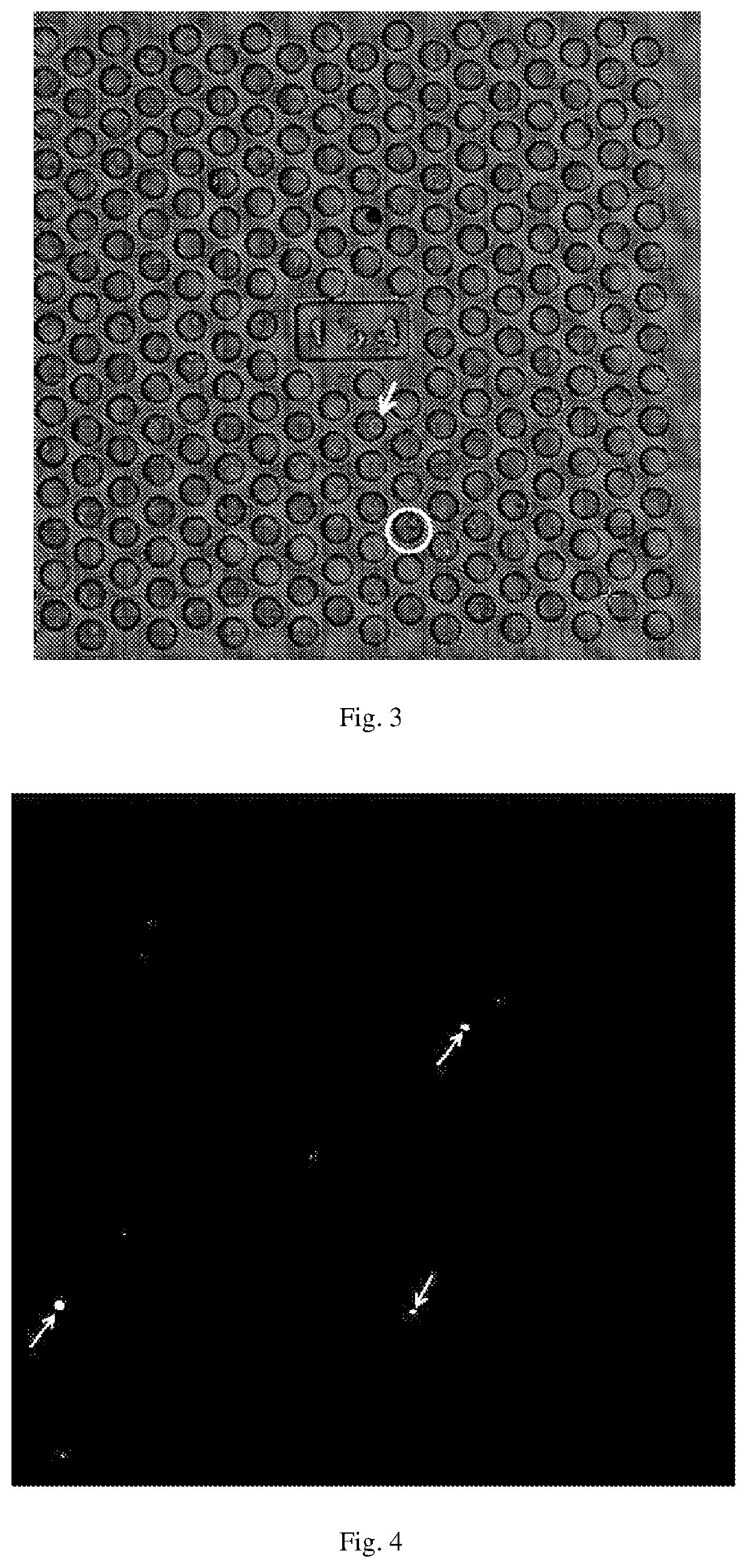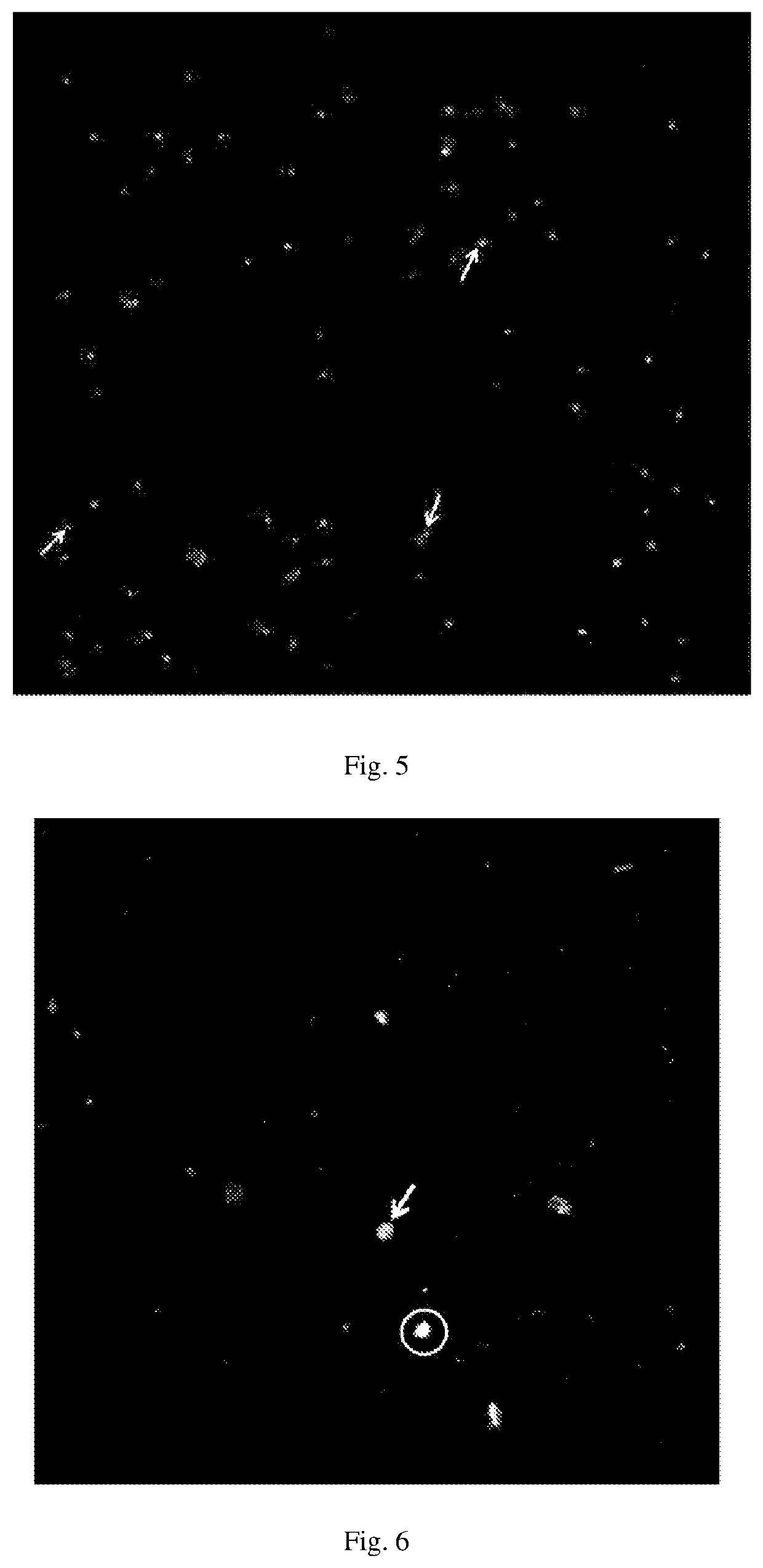Marker of fetal trophoblast cell, identification method, detection kit and use thereof
a fetal trophoblast cell and marker technology, applied in the field of biological cell identification, can solve the problems of inability to passable therapy for genetic diseases with chromosomal abnormalities, risk of infection and miscarriage, and inability to meet the requirements of test tube babies, and achieve low identification accuracy and poor sensitivity
- Summary
- Abstract
- Description
- Claims
- Application Information
AI Technical Summary
Benefits of technology
Problems solved by technology
Method used
Image
Examples
examples
[0045]Identification and Analysis of Fetal Cells in Cervical Mucus for Prenatal Diagnosis
This embodiment includes the following steps:
(1) Using a sterile cell brush to obtain the cervical mucus from 5 women in early pregnancy (6-8 weeks of gestation) (all patients gave informed consent). The brush rotates about 10 times, and the cell brush with the mucus collected by the brush was stored in 2 ml Hank's Balanced Salt Solution (HBSS), respectively numbered as Samples 1-5, and placed in a 4-Degree ice box and transported to the laboratory.
(2) The cell brush was taken out and placed in 0.25% pancreatin (containing chelating agent) and incubated at 37° C. for 3-5 minutes to digest the mucus, and the cell dispersion was observed under a microscope. Fetal bovine serum (FBS) was used to stop the digestion of pancreatin when cells were sufficiently dispersed.
(3) The 400 g suspension obtained in the previous step was centrifuged for 5 minutes and washed with HBSS 3 times. If the cell suspensi...
PUM
| Property | Measurement | Unit |
|---|---|---|
| pore size | aaaaa | aaaaa |
| diameter | aaaaa | aaaaa |
| morphologies | aaaaa | aaaaa |
Abstract
Description
Claims
Application Information
 Login to View More
Login to View More - R&D
- Intellectual Property
- Life Sciences
- Materials
- Tech Scout
- Unparalleled Data Quality
- Higher Quality Content
- 60% Fewer Hallucinations
Browse by: Latest US Patents, China's latest patents, Technical Efficacy Thesaurus, Application Domain, Technology Topic, Popular Technical Reports.
© 2025 PatSnap. All rights reserved.Legal|Privacy policy|Modern Slavery Act Transparency Statement|Sitemap|About US| Contact US: help@patsnap.com



